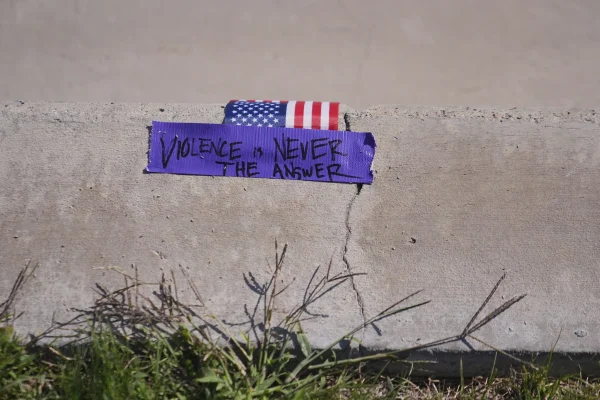Hills is shooting deer in the dark
*Now with Oakland Post Kids Club Video-Blog Action! Scroll down to view an embedded video version of this staff editorial.
Thump! A deer drops to the dirt after a .308 Winchester rips into its vital organs. No, it’s not in somebody’s backyard, but it’s in Rochester Hills’ backyard, the city which prides itself on its green space and where Oakland University resides.
On Dec. 15, 2008, the city acquired a 26.8-acre parcel of land to add to such green space. Mayor Bryan Barnett said in a release that the property has what is “vital for wildlife to flourish in an urban area.” Yet this and similar areas in the city are probably going to be the site of the sharp shooting of up to 200 deer — a fifth of the city’s herd — in January and February.
Since June 9, 2008, when representatives from the Department of Natural Resources gave a presentation to the city council about the deer population, there has been discussion about what to do to reduce deer-vehicle collisions. According to Southeast Michigan Council of Governments, Rochester Hills reported 219 car accidents involving deer in 2007.
Does the council think that killing the number of deer involved in accidents last year will solve the deer-accident problem? It seems like a pretty rudimentary solution in that case, unless it’s a coincidence.
What if the wrong deer are shot, the ones that actually look both ways before crossing the street? If the sharp shooters are going to do their hunts in secluded areas, it is possible that the deer killed will be the ones that never or rarely come into contact with busy roads.
The Oakland County Sheriff’s office proposed to city council the use of their Special Response Team, similar to a SWAT team, to do hunts at night using Armalite .308 rifles with night scopes and silencers. The clincher, and probably the council’s deciding factor when weighing the many other, less obtuse options provided by administration and citizens, would be that it’s at “no cost to the city.” This phrase is seen often in the public records pertaining to this matter, but the Oakland County Sheriff’s office is funded by taxpayer dollars. Money saved on ammunition, officer’s payroll and equipment could be re-appropriated to more sustainable options.
Studies have shown that in order for this type of population control to work, it needs to be repeated annually. While other solutions such as improved signage, reflectors and fencing may be more costly, would not need to be repeated.
Grand Haven, Mich., was also approached by the DNR with the recommendation of sharp shooting. Their city council approved the cull of about 50 deer living in the city, which was bid out at $4,800 by a government agency. The major difference between Grand Haven and Rochester Hills is the transparency. Grand Haven’s city council said that they will be announcing the times and location of the kills in order to protect residents and the officers securing the perimeter.
The Oakland County Sheriff’s office and the Rochester Hills city council, on the other hand, will not be releasing the information about time and place. They prefer to be in and out in the dark of night without letting residents know about it, supposedly for their own good and safety. They fear protest. They fear opposition. They fear it won’t get done.
They fear for good reason, considering residents have been opposing the sharp shooting option for months. Instead of listening however, they decided to go along with the easy way out and closed the discussion by not releasing any information for anybody to protest against. It’s impossible to fight the unknown.
Renowned reporter Bob Woodward, who broke the Watergate scandal, told Oakland University during his October 2007 visit that “Democracy dies in darkness.” He said that the nation’s greatest threat is government secrecy. “That’s what will do us in … There is an absolute obsession with keeping the truth from getting out.”







